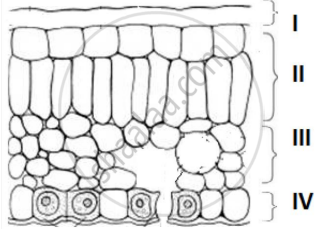Advertisements
Advertisements
Question
One of the following is not a constituent of blood. This one is:
Options
Red blood cells
White blood cells
Sieve plates
Platelets
Solution
Sieve plates
Sieve plates do not constitute blood. They are a part of phloem.
APPEARS IN
RELATED QUESTIONS
What is the name of tissues which transport food in a plant?
Which process in a plant is accomplished by utilising energy from ATP : transport of water and minerals or transport of food?
What is phloem tissue? Phloem contains two types of cells joined side by side. Name these two types of cells. State whether these cells are living or dead.
Which plant tissue is involved in translocation : xylem or phloem?
Which of the following carries substances upwards as well as downwards in a plant?
Which of the following is accomplished in a plant by utilizing the energy stored in ATP?
The transport system in plants consists of two kinds of tissues X and Y. The tissue X is made up of living cells and consists of two components A and B. The component A has tiny pores in its end walls and contains only cytoplasm but no nucleus. On the other hand, component B has cytoplasm as well as nucleus. The tissue Y is made up of dead cells and consists of two components C and D. The component C has open ends whereas component D does not have open ends. In flowering plants, either only C or both C and D transport water but D is the only water conducting tissue in non-flowering plants.
(a) What is (i) tissue X (ii) component A, and (iii) component B?
(b) What is (i) tissue Y (ii) component C, and (iii) component D?
Water and dissolved minerals get into the root hair of a plant by a process called A and enter the conducting tissue B. The process C helps the water and dissolved minerals to move up through tissue B in roots and stem, and reach the leaves of a plant. In the leaves, food is made by a process D. This food is then transported to all the parts of a plant through tissue E. The process of distributing food made in the leaves to all the parts of the plants is called F.
(a) What are (i) A (ii) B (iii) C (iv) D (v) E, and (vi) F?
(b) Which tissue is made up of living cells: B or E?
(c) Which tissue, B or E, contains sieve tubes?
(d) Which tissue, B or E, contains tracheids?
Explain the mechanism of photosynthesis.
In the given transverse section of the leaf identify the layer of cells where maximum photosynthesis occurs.

